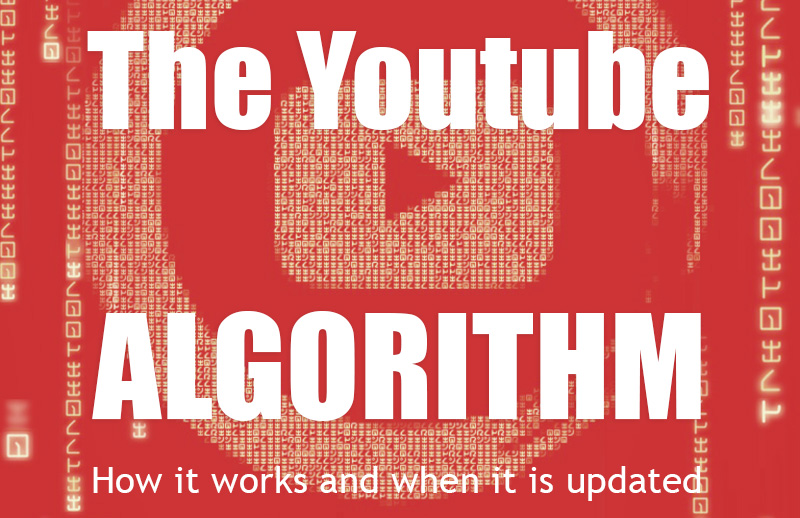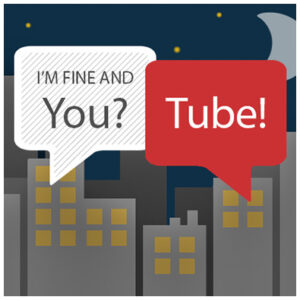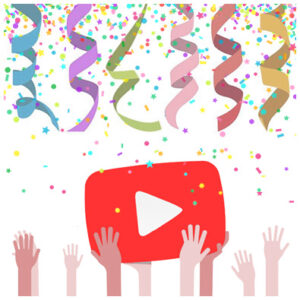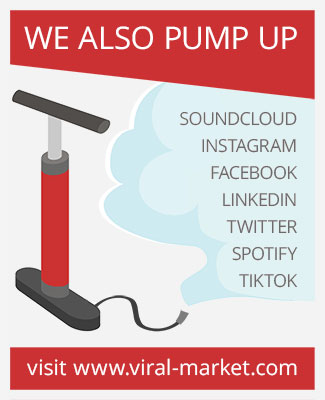Periodically Youtube, the largest video search engine, updates its internal algorithm to ensure its viewers an optimal user experience.
This operation takes place in the same way and on the same days in which the other major search engine, Google, updates its algorithm in relation to the websites it indexes.
It is not for nothing that Youtube has been owned and managed by Google since 2006. The explanation of how the Youtube algorithm works is quite complex anyway this article aims to become a comprehensive guide on the mechanisms behind it. Furthermore, at the end you will find a calendar with the main Youtube algorithm update.

WHAT EXACTLY IS AN ALGORITHM
In the field of computer science, an algorithm is a calculation procedure to solve a more or less complex problem. Riley & Hunt (2014) define it specifically as “any well-defined sequence of actions that take a set of values as input and procedures some set of values as output”.
If we were to draw it, it would look like a flowchart, one of those diagrams with a series of blocks, each representing a different operation to be performed, and with nice arrows indicating the direction to follow.
HOW THE YOUTUBE ALGORITHM WORKS: ITS GOALS
Similarly, the Youtube algorithm is a set of instructions, a “recipe”, which must lead to certain results. It performs several functions, the main ones are:
- Separating the real views from the fake ones
- Filtering spam in comments
- Removing fake accounts
- Assigning a specific rank to each video
- Helping users discover new content through recommended videos
1. The algorithm separates the real Youtube views from the fake ones
This title is a bit simplistic, or rather it is written from a Youtube perspective and to make the reader understand immediately what I’m talking about. In reality, things are subtly different. One of the most important goals for Youtube is to separate the views that come from its internal network (the suggested videos) and from external pages (not served by campaigns), from the views coming from advertising and in general from the views purchased.
When it suspects that the views are of this second type, it deletes them, and the video counter will drop. Pay attention, I didn’t say that Youtube tries to separate real views from fake ones. As I said the matter is a bit more complex.
To better understand Youtube’s intentions, it is necessary to consider that its economic revenues consist entirely of its advertising system (Adwords).
Through it Youtube literally sells views to anyone who asks them. However, the prices for ads, or sponsored views, are very high. Usually 5000 views cost at least $ 100-150 with their campaign, if you know how to set it up properly.
Since Youtube sells views, any other organization or individual who tries to do the same thing gets discouraged in every way.
Youtube has developed this algorithm mainly to protect its business, even if its official motivation is to want to ensure that the number of views on the counters reflects the number of times the video has actually been viewed.
This is why Youtube calls its algorithm “anti-spam”, implying that it should only be targeted against fake views.

Instead, it has happened more than once that this algorithm has raged against videos that have not purchased fake views but real campaigns, managed through the simple spread of posts, contests and images on other social platforms or blogs.
Even some great singers and other famous people have been victims of the inclement ax of the Youtube algorithm.
Also several big record labels as Universal and Sony have been hit. Overall, their artists (i.e. Rihanna and Justin Bieber) have seen more than two billion views taken away.
On that occasion Youtube stated “This was an enforcement of our viewcount policy”. Currently Youtube doesn’t accept anything that artificially increases the number of views.
There’s a nice online tool to check in real time the Youtube channels with the biggest losses of views of the last 30 days.
Once again we have to agree on what “artificially” means, which is not necessarily synonymous with fake views.
Youtube on its policy specifies now that it doesn’t allow to show the videos to unsuspecting viewers neither to publish poor video content just to get engagement.
Finally, according to our experience, other views can also be eliminated: those that have been made several times by the same user through the refresh or at a later time. Sometimes these views may be considered as duplicates.
2. The algorithm filters spam in Youtube comments
Youtube faced a rather difficult task when it decided to increase its defenses against spam comments. The techniques that are commonly used to filter comments encounter several problems when they have to do with Youtube.
Here the comments are usually quite short, sometimes slang, full of neologisms, punctuation marks, which make it a complex challenge.
For more information on the comment spam filtering on YouTube you can take a look at this paper published by the Department of Computer Science of a Brazilian university.
Even in the case of comments, as for views, unfortunately the algorithm can perform false detection, so-called false positives. This is the case, for example, of this incredulous user who suddenly found deleted his comments and without an explanation.

3. The algorithm removes fake Youtube accounts
Since for some time there has been a rumor that Youtube will remove inactive accounts, then in December 2018 the TeamYoutube tweeted this clarification, that only fake accounts will be removed.
In any case, this will lead to a drop in subscribers for all those channels that had bought fake ones. During the first weeks of October 2020, there was a particularly important update, a so-called major update, which focused precisely on the subscribers.
So in that period, there were also episodes of channels that saw the cancellation of some real and spontaneous subscribers. We even have testimonies of people in fleshes and bones who have been mistaken for bots by Youtube and have not managed to subscribe to a channel.
Once again a clear demonstration of how are stricts the Youtube algorithm filters.

4. The Youtube algorithm assign a specific rank to each video
The Youtube algorithm, in addition to the prevention of spam and the war on SMM providers, takes care of assigning a specific position in the search results to each video.
To complete and modify this process over time, the following metrics are used above all.
They are subject to modifications too, thanks to the frequent updates of the algorithm:
- Youtube on-page optimization (SEO): the good use of keywords in title and description
- Total Watch Time (TWT): the total amount of time (absolute value) spent by a user on a specific video
- Audience Retention (AR): the ratio between the watch time and the video length
- User Engagement (UE): it measures the number and the frequency of interactions
- Number of People Watching: the number of viewers at the same time
- posting frequency: how often the channel’s owner post new videos
- Subscribers quantity: there are some different thresholds
5. The Youtube algorithm help users discover new content through recommended videos
The Youtube algorithm applied to the recommended videos is using Deep Neural Networks. To provide relevant and inspiring suggestions to its users it mainly adopts these criteria:
- Click-through rate (CTR): the likes to views ratio (4% as average)
- Total Watch Time (TWT): the total amount of time (absolute value) spent by a user on a specific video
- number of videos seen by a user on the same channel
- the most recent topic explored by a user
- some topics searched in the past
- recently watched videos
- geographic and demographic information about that user
Hoping that you have understood how the Youtube algorithm works, now let’s see how it is updated.
WHEN DO YOUTUBE ALGORITHM UPDATE?
The bad news is that Youtube makes updates to its algorithm almost every day, sometimes even several times a day. Just like the algorithm of its brother Google, of which it shares part of the code.
The good news is that in the course of a year on average there are only 4 significant updates and of these usually only one or two involve the problems I mentioned earlier.
MAIN YOUTUBE ALGORITHM UPDATES CALENDAR
What Youtube is cooking up now…? These are the most recent updates with which it has further hardened its algorithm seeking the video traffic monopoly.
Almost all of the social marketing providers around the world have experienced difficulties or inability to deliver social signals (fake or not) in these periods and many have seen sudden drops in views and others.
| DURATION | SEVERITY | ISSUE | SOCIAL SIGNALS |
| 25 Feb 2020 | low | up/down | views |
| 25 Jul 2020 | high | loss | views |
| 25 Sept 2020 | mid | loss | subscr. |
| 25 Jan 2021 | mid | slowness | views |
Links and References
- How the YouTube Algorithm Works in 2025 (+14 Tips for More Views) – Comprehensive breakdown of how YouTube’s recommendation engine functions and practical optimization tips
- A 2025 Guide to the YouTube Algorithm (+ 7 Ways to Boost Your Content) – Insight into distinct sub-algorithms for recommendations, search, homepage, live & shorts
- Understanding the YouTube Algorithm in 2025 – Examines recent shifts toward personalized engagement and satisfaction-based ranking
- How YouTube’s Recommendation System Works In 2025 – Focuses on AI, viewer satisfaction, context, and device/time considerations
- How the YouTube Algorithm Works in 2025 – Discusses evolution of harmful-content reduction along with algorithmic updates
Related posts:
How to create a Music Video Marketing Plan to take your visibility to the next level
YouTube Channel Optimization
The impact of YouTube's new algorithm on video creators and how to adapt (December 2022)
Can You Check YouTube Watch Time?
Unlock the Secret to YouTube Monetization with these Earnings Breakdown
Consultant in communication and marketing, I support professionals and businesses in enhancing their online presence through tailored strategies.
With extensive experience in digital marketing, I focus on designing targeted social media campaigns and managing video promotion projects.
I conduct ongoing research on social networks, especially YouTube, analyzing its algorithms, user behavior, and content dynamics to inform effective practices.





















